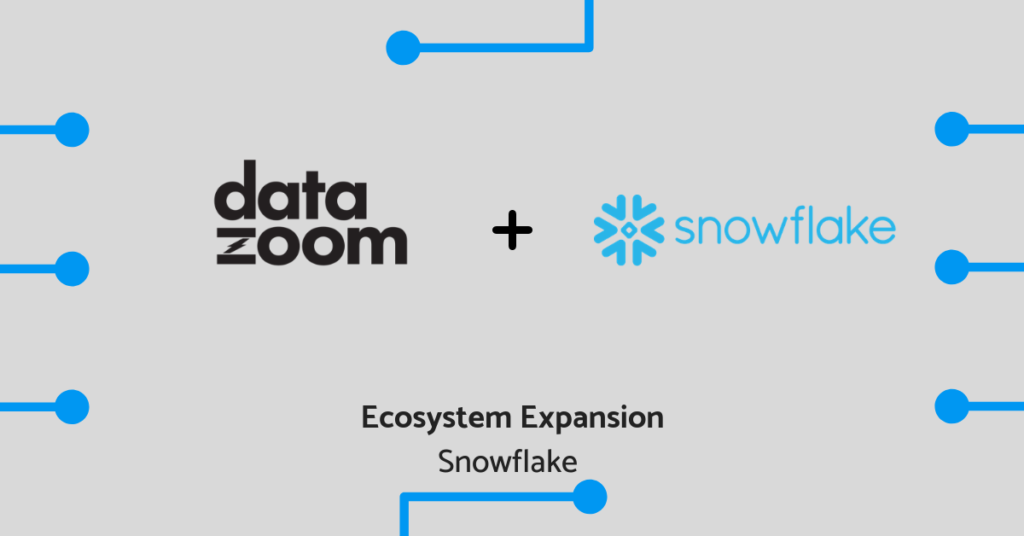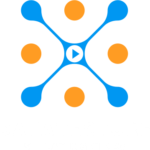Democratizing streaming video ecosystem data, if done effectively, can both improve viewing experiences and reach business goals. The time to shift towards ROI and profitability is now. The first two months of quarantine in the U.S. saw an additional four percent of households sign up for their first streaming service, which quadrupled the previous growth rate. Viewing time for U.S. streaming services are 50 percent above 2019 levels in June. This is likely the result of streaming services launched in the last 12 months, including Apple TV+, Disney+, HBO Max (AT&T), and Peacock (Comcast).
Orchestrate data collection to power a data-driven strategy
The first goal in streaming video ecosystem data collection should be to build a high-quality and engaging user experience. To do this, it is critical to have detailed monitoring in place, have the flexibility to run queries needed in real-time, and then act on it.
This starts with understanding the current state of the video system. To start, there must be a comprehensive understanding of data access and availability. Today, companies should be capturing data and forming video metrics throughout the video preparation and delivery pipelines.
This real-time data across various workflows should be integrated to add context to insights, identify the downstream impact of failures, and pinpoint the root cause of problems. This type of data integration across systems within the same workflow helps expose underlying issues and inefficiencies at every step.
Implementing data-driven actionability
Once the necessary streaming video ecosystem data has been collected, and cross-system monitoring is in place, content providers can begin to build their strategy to turn insights into actions. Acting on data can be either “online” or “offline.”
“Online” actions can be making automated changes to encoding ladders, updating recommended content options, or changing a delivery pathway or provider given a set of conditions or thresholds that are reached. These actions may be powered by leveraging machine learning (ML) models that are refined over time and using decision trees to automate a process that may have previously been manual. “Offline” actions can be the preparation and execution of run-books in a triage scenario, or simply knowing when and where to involve experts.
Calculating ROI
Measuring outcomes against changes in business goals and KPIs will enable businesses to measure the impact that decisions have made to their top and bottom line. Ultimately, this means measuring lift and incorporating ROI calculations into technology investments. This could be looking at changes and improvements to QoE-related churns, changes to technology costs, or trends time spent to close customer support tickets or customer satisfaction surveys aligned with average customer lifetime or overall churn percentage.
State of streaming video ecosystem data
For most video publishers, the economies of scale are so great that it doesn’t make sense to build out most core services (such as players, CDNs, origin servers, ad server, and backend services) in-house, and therefore the industry has been compiling their own technology stacks using best-of-breed solutions provided by video data platforms. With this strategy, the burden lies with the video publisher to ensure the system works and is efficient end-to-end. However, the trade-off comes with third-party services building their data and analytics capabilities to measure their individual functionality, not exposing their performance within the context of a workflow.
Until recently, the strategy of third-party services was to provide a dashboard or report that exposed the usage and performance of that service. Furthermore, each provider built their data and analytics systems independently before standards were created, or simply not adhered to. Therefore there are ways to understand how a single service perform, but it’s hard to compare the performance between competitive services, and determine the impact on efficiency and performance end-to-end
As the demand from publishers to provide capabilities for end-to-end observability and optimization has grown, so has the demand for solutions to provide and expose more real-time data, so that it can be aligned with data from upstream and downstream systems. The good news is that today there is greater access to more data at faster speeds than ever before. But the challenge of cleaning, standardizing, enriching, and aligning data still remains.
The Challenge
With streaming video ecosystem data stuck in too many silos, there’s a struggle to understand the underlying factors that shape results. There is too little data standardization, which doesn’t support actionable analysis.
As an example, when ad revenue has dropped, we need to look at different variables that impact revenue, and look at various data sets to uncover the answer:
- Have CPMs dropped? Why?
Data: Look for insights and correlations between player and ad server data
- Have audience levels dropped, or changed? Why?
Data: Look for insights and correlations between audience and demographic data
- Is ad delivery facing technical challenges? Why?
Data: Look for insights and correlations between player, ad server, and ad stitcher data (depending)
- Does the content face technical challenges that cause users to drop-off before the ads? Why?
Data: Look for insights and correlations between player, encoding, CDN, and origin data
When it comes to marketing dollars maximizing ROI, the cost of acquisition compared to revenue generation matters immensely.
- Are users converting from our marketing campaigns to engage with the platform?
Data: Look for insights and correlations between player and attribution data
- Are those users delivering revenue?
Data: Look for insights and correlations between player and subscription (SVOD) or ad server (AVOD) data
- Which campaigns deliver users with the highest MRR or LTV?
Data: Look for insights and correlations between player, 1st party data, and financial data or ad server data
Gaining actionable insights
When we’re looking to make changes, we need to have already identified the priorities and the goals. First, what does the business want to achieve: Are we prioritizing growth? Profitability? The user experience? Secondly, what does success look like: 10 percent revenue growth? 10 percent subscriber growth? 10 percent cost reduction? For each business goal, metrics need to be agreed upon that are used to measure success.
What’s next is to ensure the underlying data is accurate behind the calculations/goals and can be measured to show progress. Establishing a single methodology for what and how things are monitored and measured will create a common understanding of system performance. Therefore, when insights are tied together, it can easily deduce what variables impact end-to-end workflows and thus control the outcomes and results, matching the business metrics.
Democratizing the complex streaming video ecosystem data: Why it matters and what the future could hold
Without the ability to understand what’s possible and to make improvements, so much of the efficiency and value of using best-of-breed solutions will be lost. Data is the only way to uncover and measure the impact of actions taken, and to track progress against business goals. Looking into the future, service providers should be evaluated not only for their capabilities but also for their ability to be a strong provider of data.
The result will be greater efficiency for the video streaming industry. Traditional “video analytics” tools or other single-system analytics diminish, and end-to-end analytics and workflow analytics rise in their place. With data as “building block” solutions that support data engineers in reducing the time instrumenting, piping, standardizing, and cleaning data will grow and power new innovations for real-time adaptability.
As our technology improves, how we approach measurement should evolve as well. Analytics only matter if customers know how to leverage these insights and transform them into impactful changes for their business. It’s critical that everyone in the organization understands the same goals, uses the same metrics, and speaks the same “data language.” In 2021, the industry will focus on making this data align with business goals for the organization – ensuring it is made accessible and contextualized for all relevant stakeholders.
Creating sustainable growth in the video business is about setting goals and priorities, defining metrics, and measuring progress in the context of revenue, lifetime customer value, and profitability. To get there, the industry needs investments in data, collection, standardization, and enrichment and measurement at every stage of the business.





